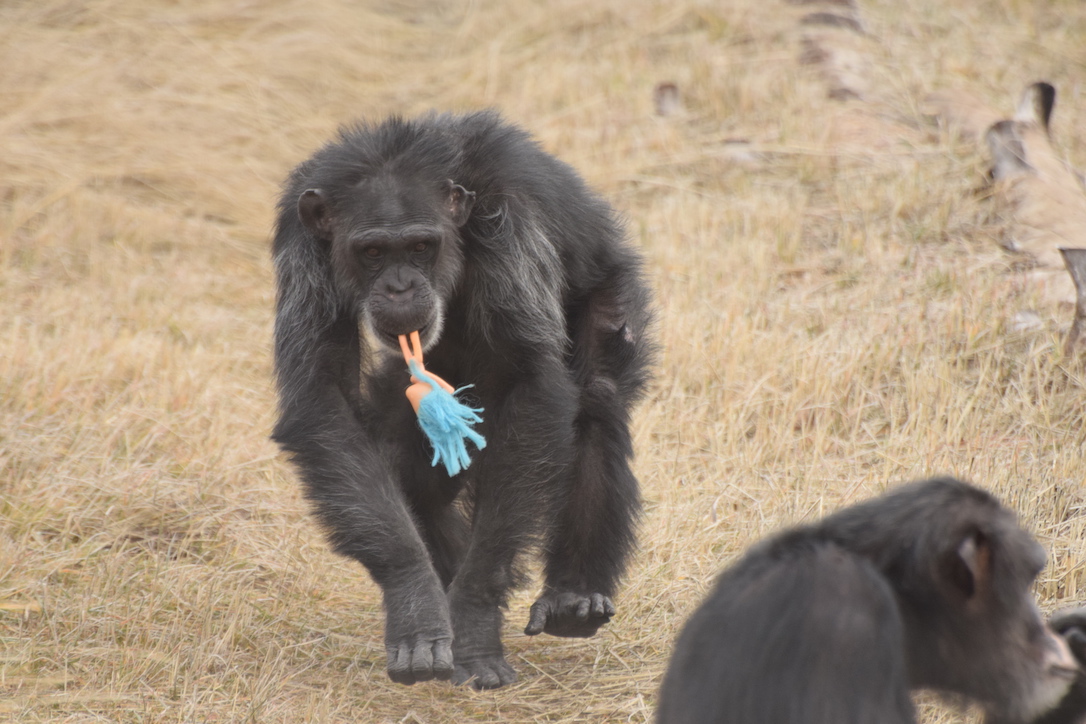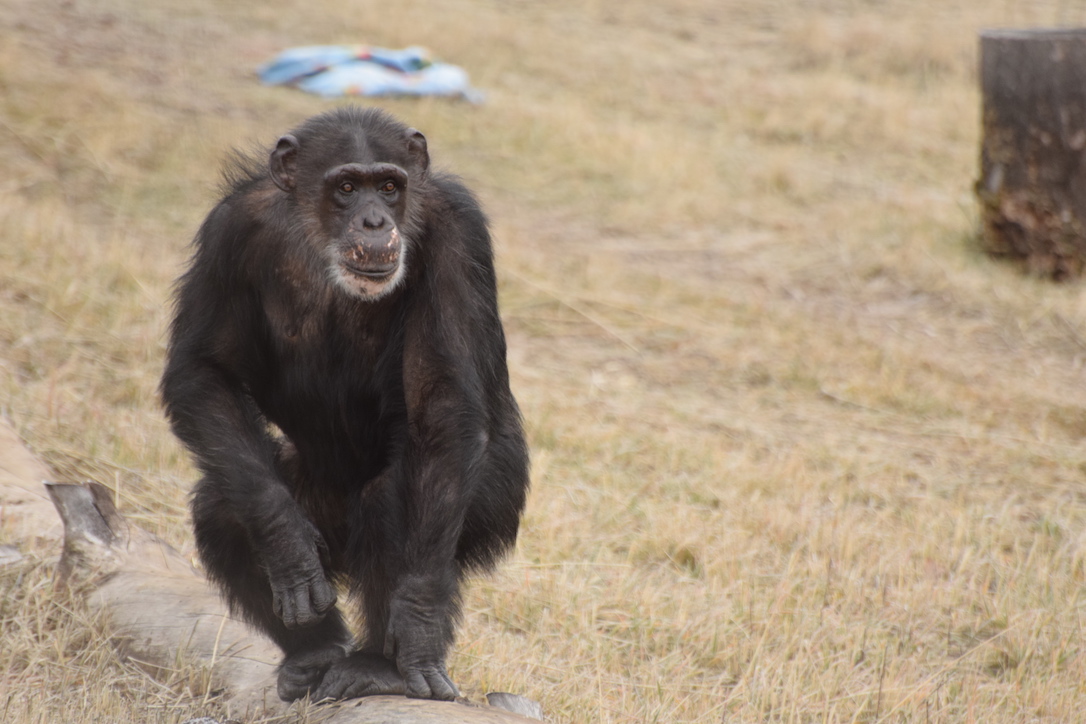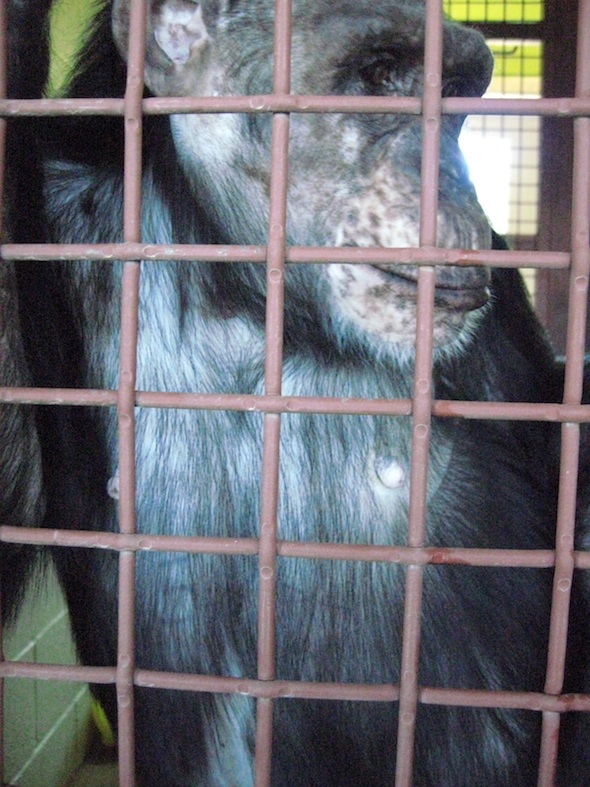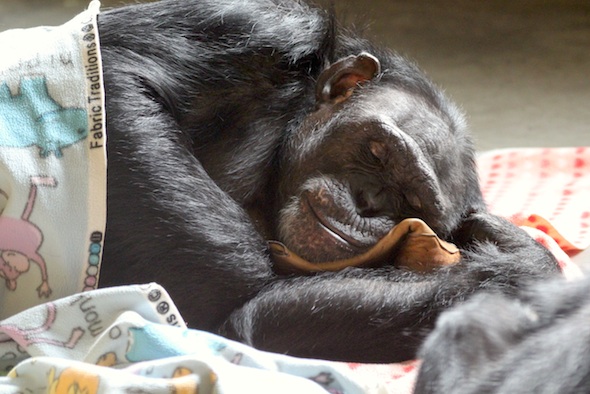The common phrase “sharing is caring” doesn’t always ring true.
Those of us who work with wildlife in any capacity have to be cautious about the ways in which we publicize our work. In the modern age of consumerism and social media, organizations need to share compelling content to generate financial support and advocate for their respective causes. Although they can inspire people to take action, pieces of visual media can easily be taken out of context and may contribute to the suffering and exploitation of nonhuman animals elsewhere. This is one of the greatest challenges facing organizations like ours as we advance further into the 21st century.

A new piece co-authored by a diverse group of esteemed scientists and conservationists is making waves for attempting to address this issue. The commentary, published last month in the American Journal of Primatology, urges researchers to be selective and judicious when sharing images and locations of the nonhuman individuals that they study.
This piece was spurred by emerging findings that irresponsible or inaccurate representations of nonhuman primates provide fuel for the wildlife trade. For example, Dr. Anna Nekaris and the Little Fireface Project have found strong links between viral videos featuring endangered slow lorises and the popularity of that species in the global wildlife trade. Contemporary organizations around the world have also uncovered similar links between social media content and the trafficking of wild primates. Notably, images featuring celebrities posing with primates (like this one of pop star Rihanna) wrongfully propagate their perceived value as pets. It seems likely that a selfie taken by a common researcher or tourist with a wild animal would have a smaller but similar effect. With so many of these images being circulated by well-meaning individuals and organizations, it is difficult to quantify just how big of an impact they have. Given that so many of the world’s primate species are at risk of extinction due to human activity, it is critical that those who study and protect wild primates do not accidentally create additional demand for their exploitation.

For those of us who advocate and care for captive primates, however, the relationships between shared images and potential outcomes are not as clear. Within the community of North American primate sanctuaries and zoos, sharing visuals that showcase the value of our work is part of our strategic plan. For example, our team at Chimpanzee Sanctuary Northwest inspires compassion for chimpanzees by writing and sharing daily blog posts that portray the lives of the chimpanzee residents. The goal is to highlight their emotions, intelligence, and social relationships. This collection of images and stories has, over time, amassed a tremendous community of supporters that directly benefits the chimpanzees.
However, we simultaneously take care to only share content that positively impacts primate individuals, populations, and species. Social media is truly a double-edged sword, and those who wield it carelessly may cause more harm than good. A video of Foxie playing with dolls, for example, could be woefully misunderstood if the provided contextual details are removed or ignored. An uninformed viewer may begin to wonder: Is she a trained performer? Does she have access to the outdoors? Does she have other chimps to play with? Is she privately owned and being bred for human entertainment? In the absence of critical information, such misconceptions may become widespread attitudes and beliefs.

As a true sanctuary, we attempt to combat harmful misinformation. One of our objectives is to demonstrate that chimpanzees, as individuals and as a species, suffer immeasurably from exploitation. This claim sharply contrasts how nonhuman apes have been utilized and portrayed in recent decades. Thousands of chimps were housed in menageries, shot into outer space, dressed up as human children, infected with diseases and coerced to perform for our amusement. Thankfully, this pattern of abuse seems to be ending. With public opinion now favoring chimps, the last chimpanzee actor, an adolescent male named Eli, recently retired and will soon be transferred to an accredited facility. (Eli is the subject of an upcoming documentary.)
Even though the era of chimpanzees on the big screen seems to be over, the myth that chimpanzees belong in captivity is likely to perpetuate as long as people see chimpanzees in captivity. For example, seeing performing chimps on greeting cards, in commercials, or interacting closely with humans can shape how the public perceives them. Researchers affiliated with North American zoological parks have even found evidence that viewing images of nonhuman primates in humanized settings can influence how people interpret their conservation status, suitability as pets, and well-being. From this evident pattern emerges a multi-faceted dilemma.
The most difficult of these questions, in my opinion, is whether we can accurately tell the stories of captive chimpanzees without showing the less natural aspects of their daily lives. Should we use Photoshop to remove the electrified barriers on Young’s Hill, which are necessary to keep humans and chimpanzees safe? Should we hide that the chimpanzees prefer to nest with blankets or sleep on cement floors because that’s all they had access to during the decades that they spent in laboratories? Should we ignore that Jamie has fascinations with cowboy boots and various human accessories, likely shaped by her background as a performer? Sure, we attempt to focus or crop out the steel caging because it ruins our photographs, but should we be avoiding the same metal bars because they send the wrong message about chimps? On the other hand, if we only show photos of chimps frolicking outside in a green meadow, will people start to believe that keeping chimps in captivity is good for them? Are we on the verge of whitewashing the history of our relationship with chimpanzees?
There are no easy answers.

Organizations are each free to respond to these new challenges in their own way. To lessen the risk of misinterpretation, we try our best to create content that prioritizes education and empathy over aesthetics and humor. We’ve found that most of our followers are invested in the chimpanzees’ well-being and, fortunately, thoroughly read and understand our captions. This gives us confidence that we can maintain transparency, and even occasionally be brutally honest, regarding the challenges of providing sanctuary care for chimpanzees. We caregivers remain impressed by how aware and understanding our supporters have been despite our sanctuary’s recent growing pains. Rather than just respond with emojis and ‘likes,’ our followers weigh in on the management of our social groups, suggest new enrichment ideas, and comment on the health of the individual chimps. This degree of engagement and awareness tells us that it is possible to share revealing content without necessarily spreading the wrong ideas.
That does not mean that we are all blameless. I recently went through my personal Facebook profile and erased many photos of me interacting with captive wildlife (including some of orphaned spider and howler monkeys using me as a climbing structure). It’s not that my actions were inherently irresponsible; in most cases, I was serving as a trained caregiver and the interactions were a necessary aspect of each individual’s rehabilitation and development. The real problem is that these photos are difficult to explain and the chances of them sending the wrong message are too high. If someone was scrolling too fast to read my captions, all they would see is a naive white backpacker holding a baby monkey. Some would even comment that they wanted me to bring one home so they could play with it. I have gladly hidden these photos No amount of attention is worth putting an animal or human in danger.

With this new paradigm in mind, please continue to enjoy and share our frequent and intimate portraits of the chimpanzee residents. We hope that they inspire you to care about and act on behalf of disadvantaged nonhuman primates. They need advocates, now, more than ever.
However, never forget that all chimpanzees are strong, intelligent, emotional, and adapted for their ancestral homes and complex societies. They do not belong in captivity and they do not thrive here. Sanctuaries like this one were created to mitigate the errors of the past and provide a better alternative for retired chimps, but they are not designed to exist indefinitely. All chimpanzees are unique individuals and valuable members of an endangered species that may be gone within the next century, and their exploitation takes more away from them than it gives to us.
Please share responsibly.











